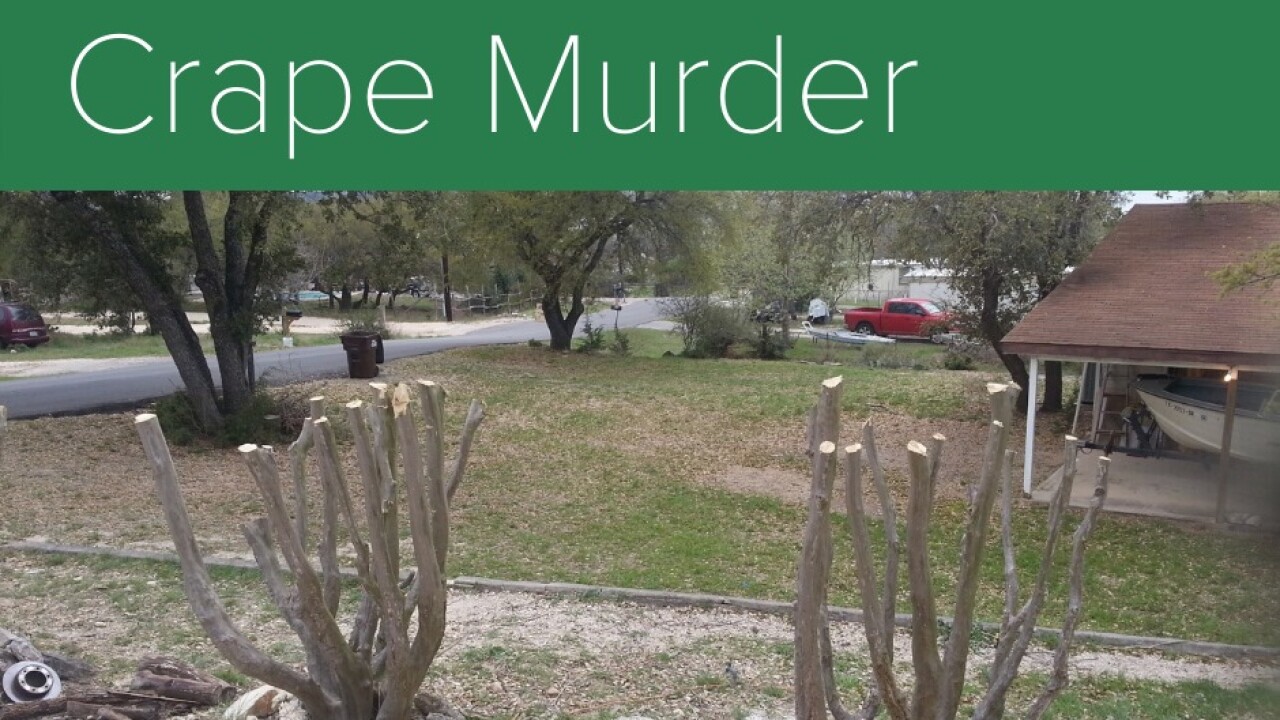We're getting to that time - when you only have to stroll or drive through a suburban subdivision to witness the carnage.
The LSU AgCenter is issuing it's annual plea to gardeners everywhere: Don't commit crape murder.
"Cutting back crape myrtle trees is not, and never has been, the preferred way of handling these trees," a post from the agency says. "In addition, it is not healthy for the trees in the long run. Cutting back crape myrtles creates large wounds that can serve as points of entry for fungal decay organisms. Pruning like this shortens the life of the tree."
Here's a list of "pruning misconceptions" from LSU AgCenter Horticulturist Dan Gill:
Belief: This is the preferred or best way to prune a crape myrtle.
Truth: Nothing could be farther from the truth. For the overwhelming majority of us, enhancing the natural shape of our crape myrtles is most appropriate.
Belief: Crape myrtles bloom better when cut back.
Truth: This is not accurate. The flower clusters may be larger on severely pruned trees. But the added weight on the ends of long, thin branches causes them to bend over awkwardly, especially after a rain. These low-hanging flower heads can create problems and get in the way when a crape myrtle is planted near a driveway, sidewalk or path. And because the tree is smaller, it actually produces fewer flower clusters.
Belief: You can cut back a crape myrtle to change its shape.
Truth: Some types of crape myrtles grow tall and upright like a vase, while others are shorter and spreading, more like a mushroom. These shapes are controlled by genetics. You cannot make an upright-growing crape myrtle grow in the shape of a mushroom by cutting it back. An upright-growing variety will simply grow back upright again. So if you want a crape myrtle that will mature the shape you desire, make sure you choose one that naturally grows that way.
Belief: Young crape myrtles should be cut back to make them look “fuller.”
Truth: Young trees often appear spindlier and less substantial than older, well-established trees. But this is a matter of age, not something that needs to be corrected with pruning. Young crape myrtles are not supposed to look like older crape myrtles. Over time, young trees will attain the shapely, full canopies of older trees without drastic pruning.
Belief: You should cut back a crape myrtle to control its size.
Truth: If the height of the crape myrtle is not causing a problem with a nearby structure or power lines, there is little reason to reduce a tree’s height. To cut a crape myrtle back for the vague reason of “it just seems too large” ignores the fact that these plants are trees. They are supposed to be relatively large. Nobody cuts back other flowering trees just because they dared to grow into what they are – small trees. Why do we do it to crape myrtles?
To read the whole article from Gill, including details on how to prune your trees properly, click here.


